The Imitation Game – Part 2
The Imitation Game is a Perception Game…
(And bear with me... this is about horses - and horse-human interaction, too.... I am stumbleing around about in this post - the text is not crystal clear - yet - I wanted to share it - something is forming in me, about the importance of embodiment, the shared nature of perception, how we form our beliefs as humans - how horses can help us see this - by being them.)
The imitation I talk about here has nothing to do with copying or imitating for its own sake. Imitation is an important way to, and of learning. You find imitation (of various kind; mimicking, mirroring, emulation, “true” imitation, teaching, schooling/herd/group behavior) in social learning, in language learning, in so called situated learning – as e.g. in apprenticeship models, etc. Imitation is also an important tool when to getting to know someone (as in the chameleon effect – which is about creating/ “achieving” liking each other – and in creating a common ground of understanding and communicating with each other – creating social contracts). Imitation is so much more than copying – and play a big role in all mammals’ development and growth into adults, but also in adult life. It is a corner stone of how we interact with each other, albeit often imitation is not conscious, it can be looked at, made conscious, and experimented with.
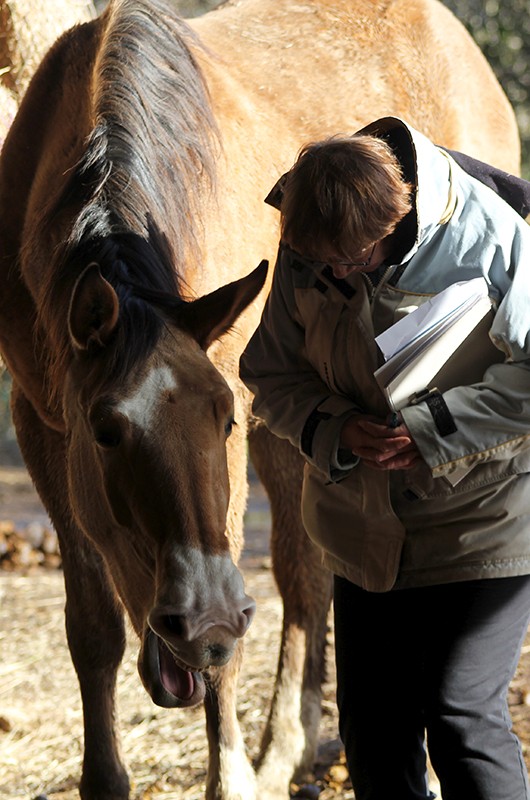 AND. Imitation also plays a very important part in perception. How do we share worlds with each other? How do we enter someone else’s world? Which when a common ground of communication is established, (which includes mutual respect), is the next step of getting to know each other, of opening the door to your own world and entering the door to the world of “the other”. Getting or being granted access to another person’s (or being’s) world – is to see each other’s way of perceiving the world – it is learning about perspective taking. It also makes it possible to adjust or question your own perspective, or even updating some of your own core beliefs of the world, or about yourself.
AND. Imitation also plays a very important part in perception. How do we share worlds with each other? How do we enter someone else’s world? Which when a common ground of communication is established, (which includes mutual respect), is the next step of getting to know each other, of opening the door to your own world and entering the door to the world of “the other”. Getting or being granted access to another person’s (or being’s) world – is to see each other’s way of perceiving the world – it is learning about perspective taking. It also makes it possible to adjust or question your own perspective, or even updating some of your own core beliefs of the world, or about yourself.
It is easy to think perception is an objective process. That we take in objective facts about the world and how it functions, through our senses. But how we perceive the world is learned, for all of us, through seeing through the eyes of those who took care of us as infants and then through our childhood. We took part in their perception of the world; we saw the word through their eyes. Perception is a shared and joint activity – laying the foundation for how you see and how you interact with the world.
How I perceive the world is found in my response to the world, founded on how I learned to perceive it – jointly – with my first caregivers.
As infants – we communicate partially by imitating our caregivers as well as receiving back imitation (think about how you interact with a small child; both of you following every change in facial expression, gestures, body movements and vocalizations – and in rhythmical turn-taking communicating with each other). This is how we learn about these different steps in communication, like e.g. turn-taking and rhythm, and also how to leave and come back to a conversation. Besides the imitation – infants and their caregivers engage in gaze sharing, gaze following, joint affection, join attention, joint intention etc – all different kinds of shared activities, which we as infants engage in with our caregivers, taking in how they perceive the world. As infants, we perceive the world together with our caregivers. Our perception of the world is a collaborative perception, we have nothing else to choose from, so as infants we trust that how the world is perceived by our caregivers – IS the world – and we form our perception of the world, as infants, from this trust in our caregivers. Trust is not “just” a feeling – it is a way of perceiving together. We perceive through this trust in our caregivers – without any ability to question how distorted or “accurate” their perception of the world around them is.
How we learn to perceive the world as infants then becomes our template for how we then later, as adults, perceive the world, how we trust and how we trust our shared perception of the world with others.
In this way – perception is not an individual activity – it is a shared activity. When we engage with others – we engage in mutual perception. Our interactions with others inform of how we perceive the world. Perception is in this way a collaborative effort.
This is trust. When we relate to other beings – and we engage in seeing the world through their perception of it.
If we as infants have learned that the world is a dangerous, hostile world, a world where the stronger and bigger is entitled to have their needs met, where the infant is merely a means to meet the caregiver’s needs, where there is little or no reciprocity in communication or meeting of needs, whether they are physical, emotional or cognitive, our own perception of the world will be similar. This is the perception of the world we will internalize. This comes either from the infant seeing the world “through the eyes of the caregiver” – or from how the caregiver respond/react to the infants needs and efforts to communicate and share experiences.
This is, besides the attachment we form, an important indicator of how we as adults then will react/respond in and to the world.
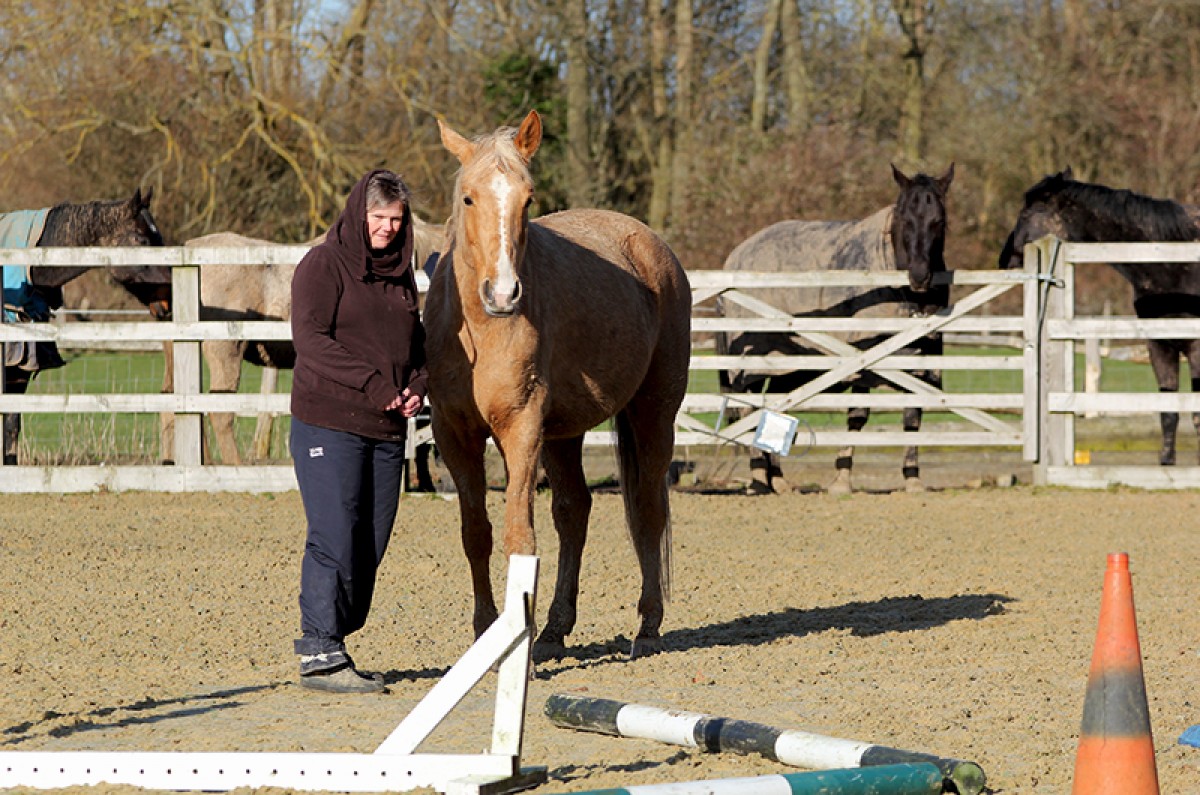 How we learn to perceive the world – is how we then think the world functions – and we will seek out other people who perceive the world in the same way. At times – we will meet people – engage in relationships with them – finding out that they perceive the world differently.
How we learn to perceive the world – is how we then think the world functions – and we will seek out other people who perceive the world in the same way. At times – we will meet people – engage in relationships with them – finding out that they perceive the world differently.
Either we will leave these people. Or we will change – slowly – how we perceive the world.
So even if we did not have good enough caregivers as infants. Caregivers who neglected us in different ways and/or abused us – we can re-learn by new experiences with someone or several “someones” – who we can share perception of the world with – which entails us trusting them enough to leave our own perception of the world – and see it through someone else’s eyes.
As infants we developed our ability to perceive via our proprioception, our senses and our emotions. Perception is not at all a passive or static activity – it is a creative activity where how we perceive something is created by our bodily experience of it.
It is much harder for us to change our perception of the world if we do not have access to our bodies. When we disconnect or dissociate ourselves out of our bodies (and at times our minds) – we only have access to our primordial – early achieved perception of the world. We move into survival mode – and can not see the world as it is – only as we learned that it was. The result is that we react to the world as we were no longer here – but in the world of our primary caregivers. We are then stuck in our past.
This is why grounding practices are so important if you want to shift perspectives. Grounding helps you stay in your body – and when you do – you can open your mind to see other ways of perceiving the world, trough the eyes of people who were not part of your (or anyone else’s) troublesome childhood – but see the world in a freer way, not from a pure survival perspective.
This is also why working with horses – playing the imitation game – can open up to these kinds of processes. It can invite to creating a common ground for communication, to engaging in the chameleon effect – seeing if imitation seems to lead to liking of preference of individuals – in individuals. But after that – it can also invite to learning about perspective taking. The horse does not only have other and different functioning senses – and processing of the incoming information – he also has his own individual way of relating to the world – though the early shared experiences of perception he has learned.
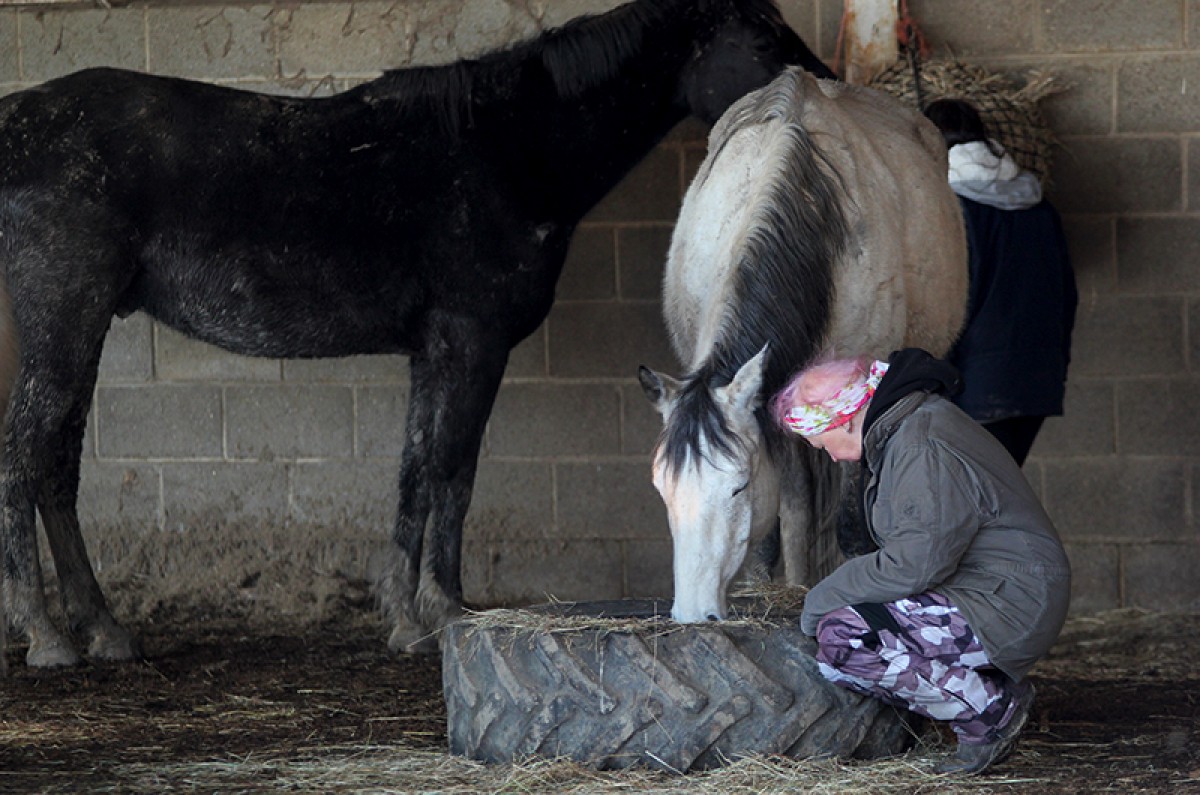 Most horses I have engaged in imitation games with have been very open to the experience – if also rather surprised in the beginning. Seldom do they show any annoyance about the game. Humans on the other side – can react rather dismissive, annoyed or even aggressive if you imitate them, beyond the mostly unconscious chameleon effect – or an outspoken agreement that imitation will take place as a part of a situated learning experience. We have much more patient with children who imitates – than we have with adults.
Most horses I have engaged in imitation games with have been very open to the experience – if also rather surprised in the beginning. Seldom do they show any annoyance about the game. Humans on the other side – can react rather dismissive, annoyed or even aggressive if you imitate them, beyond the mostly unconscious chameleon effect – or an outspoken agreement that imitation will take place as a part of a situated learning experience. We have much more patient with children who imitates – than we have with adults.
The sad part here is that imitation is a way out of an old way of perceiving the world, of being stuck in the past – if you can get help to see the process. It is such an early part of our development – to repair it – one must allow for some level of imitation – and a big part of letting someone in to share a perspective, but also build the trust that is necessary for these processes to take place, which can be more easily said than done. Much of this learning – or re-learning is unconscious. But can be made conscious. Often needs to be turned into a conscious process, to overcome the fear and resistance of moving out into uncharted waters – and perceive the world, and yourself – through the eyes of someone else.
If you engage in imitation – seeing the world through the eyes of a horse – you also get to know more about his world. The more you can drop your own preconceived notion about how the world IS or should be – the more open you will be to see it from other perspectives. Also the horse’s perspective, through the eyes of the horse.
*This is how I theorize and try to understand a process I myself go through, re-defining my perception of the world. In an effort to leave my past – in the past. So it does not affect me as much in the HERE and NOW. I study Cognitive Science – and have done so for a long time, but what I write about here comes mostly from my own experiences, impressions and ideas I get when I see horse-human interaction and when I engage in it myself, as well as from my own and other’s engagements with humans – with each other. I can be dead wrong about everything I write, but that is not what is important - it is an exploration journey. And I am trying to see things from other and new perspectives.
Changing the way you perceive the world is to change old structures that you have carried with you for a long time. From personal experience – I can say that this IS NOT EASY. But it has helped me to engage with horses (and other non-humans) – as well as humans of course – and curious as I am – I then also can see it in other beings and their interactions – and theorize about it.
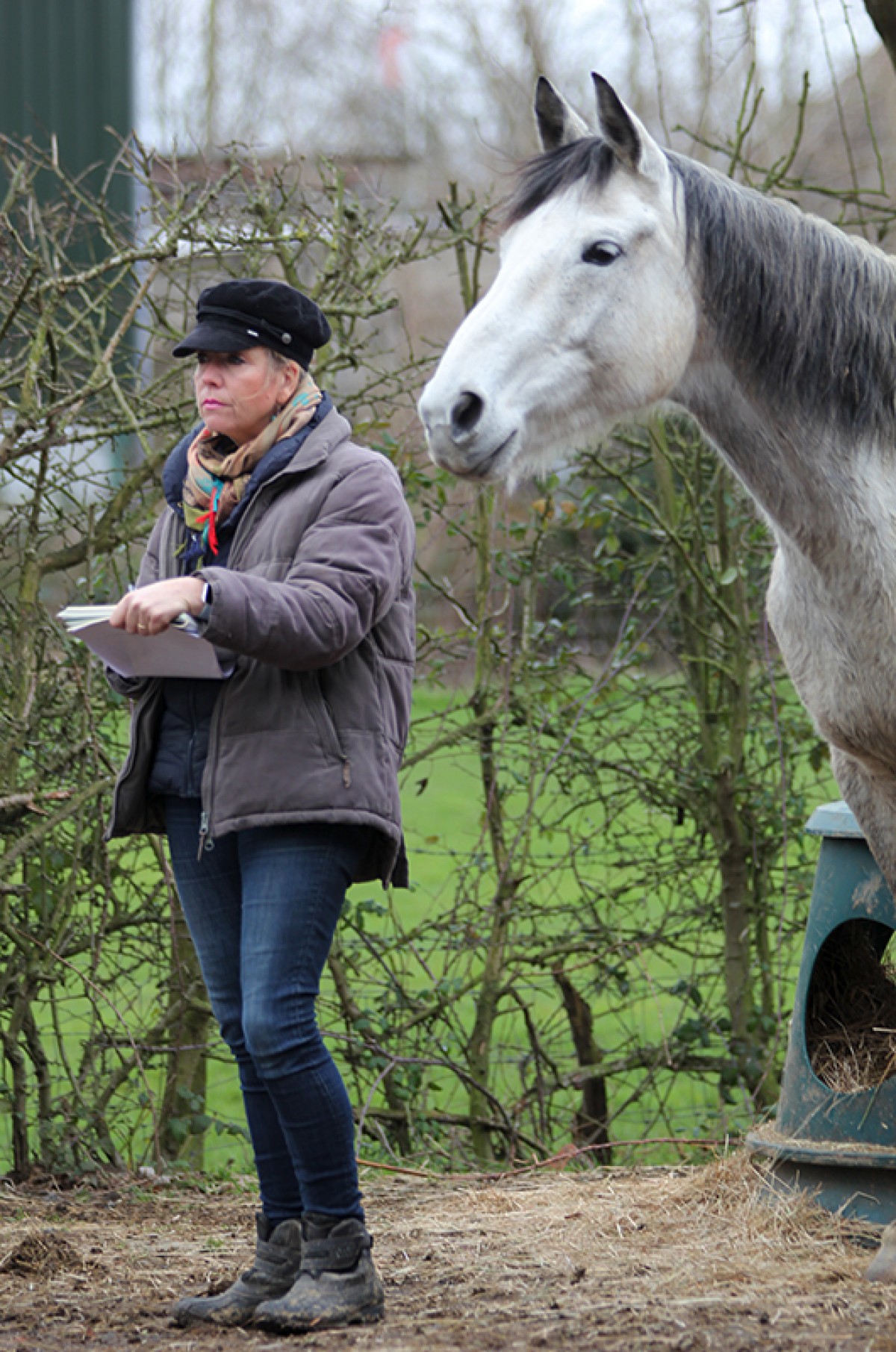 This is the first time I move from thinking about the role of imitation and how that is connected to perception, more will come as I get a better understanding of these processes – also in myself. Apart from my own experiences and ideas – here is a short reading list (my reference list for now) if you are interested in the topic of imitation, perception, the role of the body – and the importance of shared experiences – how they form us – and how we can repair old structures.
This is the first time I move from thinking about the role of imitation and how that is connected to perception, more will come as I get a better understanding of these processes – also in myself. Apart from my own experiences and ideas – here is a short reading list (my reference list for now) if you are interested in the topic of imitation, perception, the role of the body – and the importance of shared experiences – how they form us – and how we can repair old structures.
References:
Ataria, Y. (2018). Body Disownership in Complex Posttraumatic Stress Disorder, Palgrave Macmillan
Bredlau, S. (2016). On perception and trust: Merleau-Ponty and the emotional significance of our relations with others, Cont. Philos. Rev., DOI 10.1007/s11007-016-9367-3
Gallagher, S. (2005). How the Body shapes the Mind, Oxford University Press, DOI:10.1093/0199271941.003.0001
Wynne, C.D.L. & Udell, M.A.R. (2013). Animal Cognition. Evolution, Behavior & Cognition, Palgrave Macmillan
PS. A random thing I found out – when I did what others in this EIT/L, level 2 training also engaged in imitated the horses while they were eating out of the haynets – was how hard the nylon in the haynets is. It was a bit cold (February in UK), and when I without gloves repeatedly pulled out hay from the net with just one hand (horses only have one mouth, and can’t hold then net whilst the pull out the hay, so pulling it out with one of my hands, I figure would give me the most similar experience as to how the horse does this). The nylon quickly gave me little cuts and wounds on my cold hand. I got red and dry, with small wounds, already after a couple of minutes of pulling. I assume the horse with his sensitive muzzle also get some kind of experience from the nylon when he pulls it. I think this can be important to look at, from a welfare perspective, asking ourselves, what kind of material is best to have in haynets, if we want to have them?
Text and pictures are copyright protected ©Katarina Lundgren, MiMer Centre, 2020
When you subscribe to the blog, we will send you an e-mail when there are new updates on the site so you wouldn't miss them.
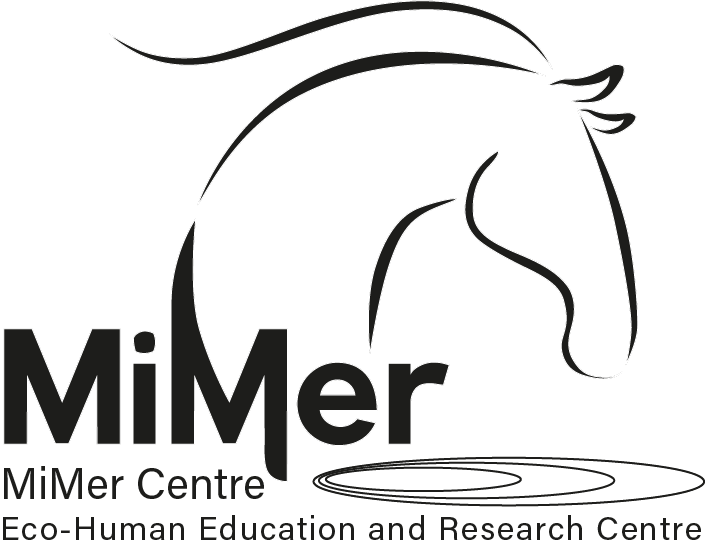
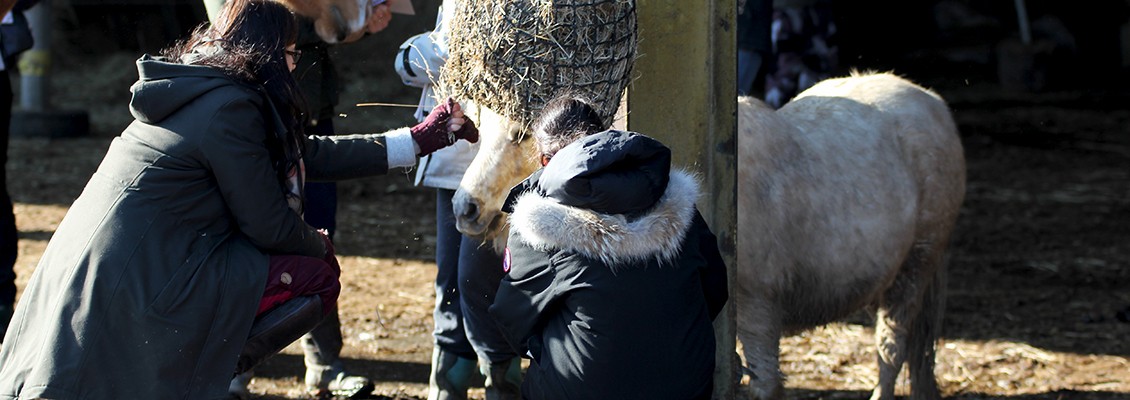
Comments